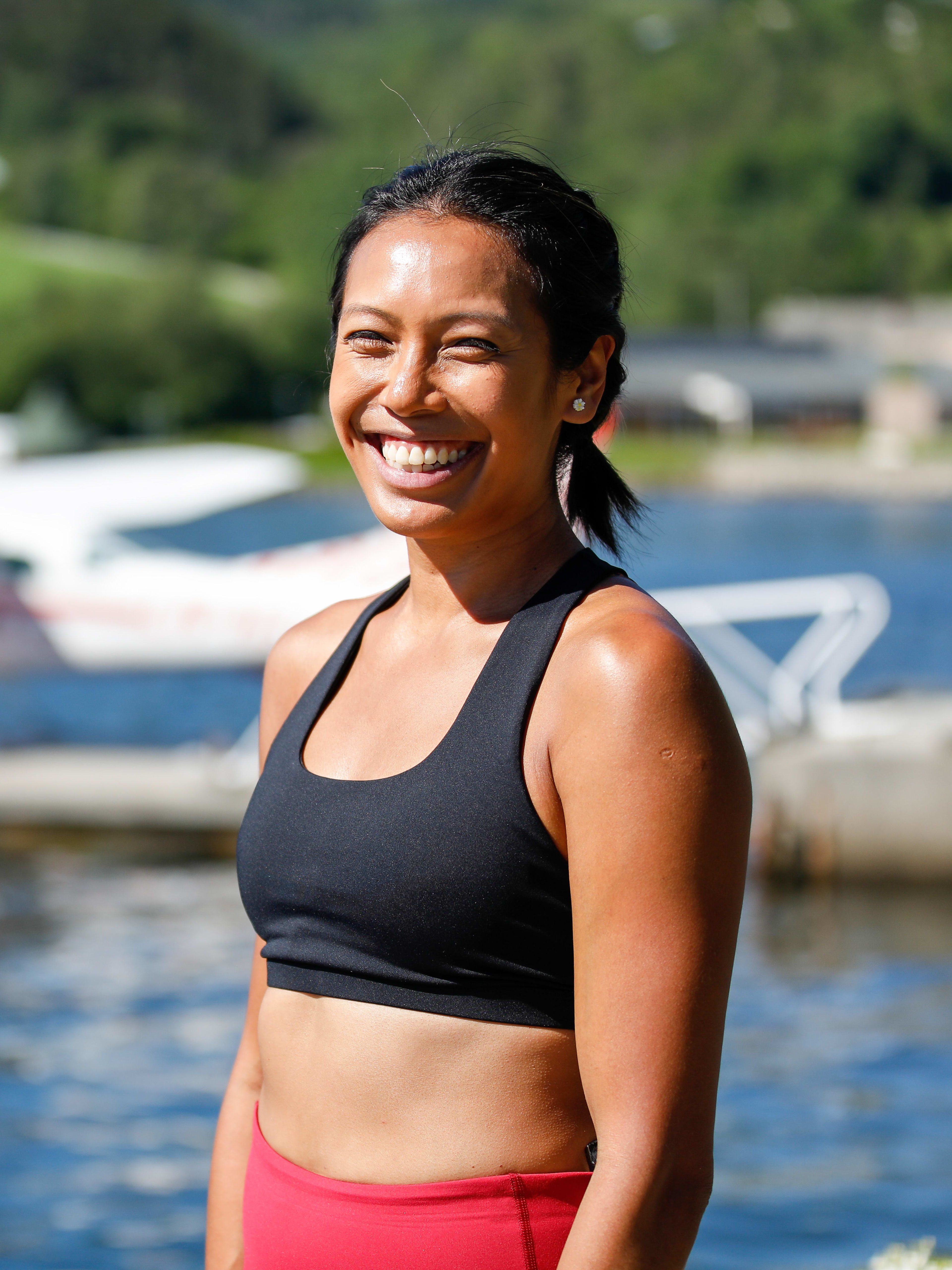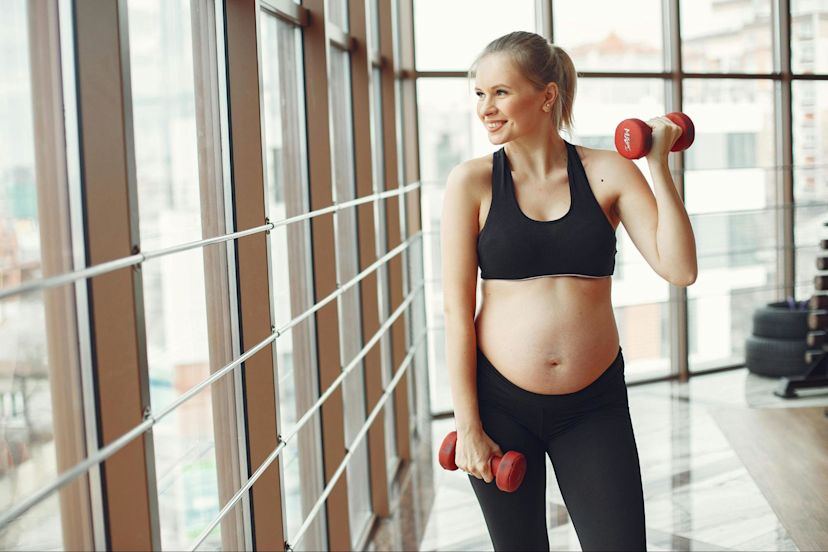Strength Training Without Weights? Key Benefits and 12 Exercises to Try
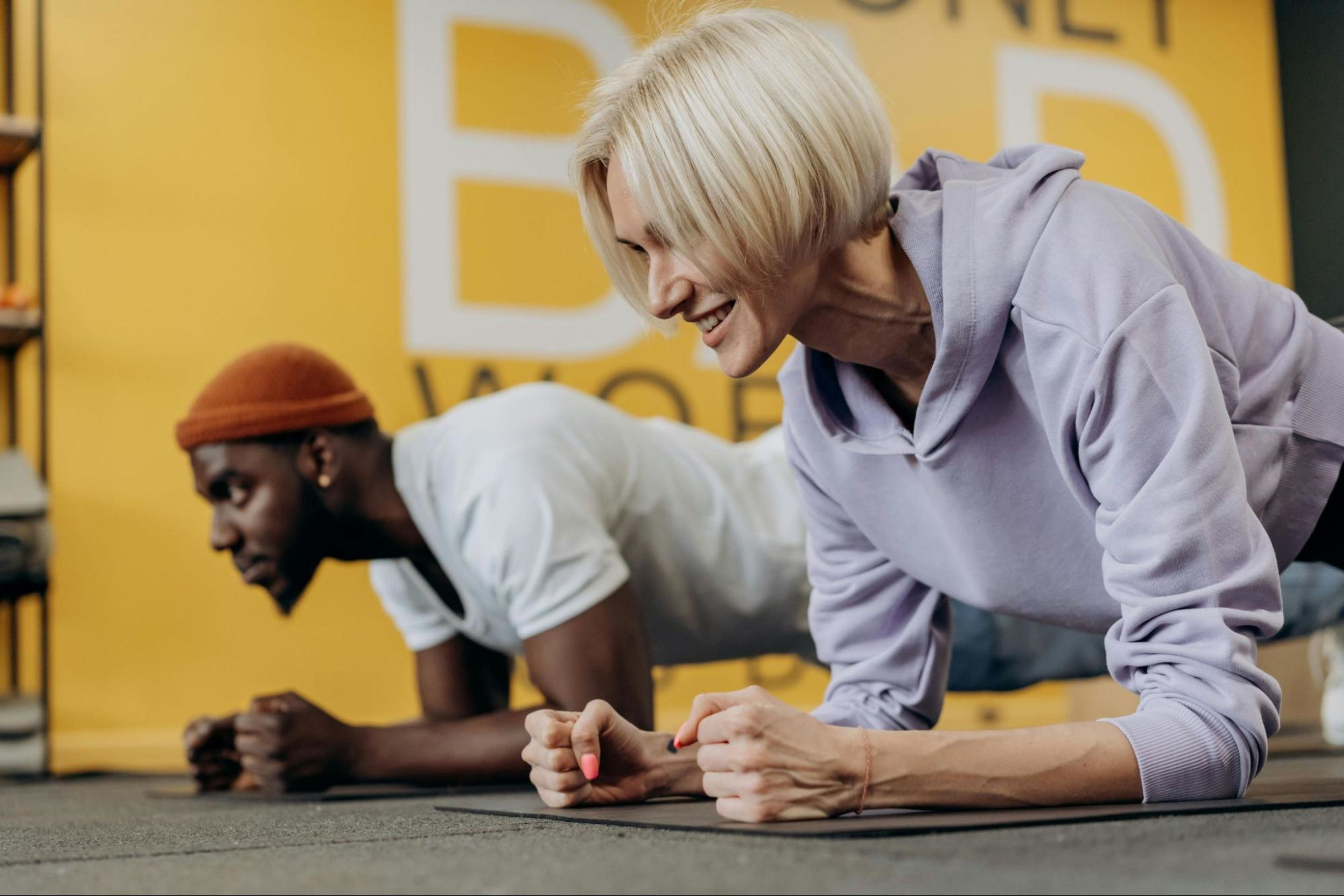
A common misconception in fitness is that strength training requires dumbbells, heavy lifting, grunting, and an ill-fitting spaghetti-strapped tank top. While some people may thrive in those conditions, it’s not the only way to build muscle strength.
Building strength can be done successfully without weights or equipment. Whether you’re a beginner or an experienced athlete, incorporating bodyweight exercises into your routine can help you build strength, endurance, and stability.
Below, we’ll explore how strength training without weights works, the benefits, and some of the best exercises to include in your routine to get started, including:
Let’s get going!
Can you strength train with no weights?
Yes! Strength training without weights is entirely possible. Strength training fundamentally relies on resistance, which you can provide with your own body. When you perform bodyweight exercises, you’re still working against gravity and using resistance to challenge your muscles.
Scientific research supports the effectiveness of bodyweight exercises in improving muscle mass and endurance. Progressive overload, a key principle in strength training, can be applied even without weights. This means increasing the difficulty of exercises by adjusting variables such as repetitions, sets, tempo, and range of motion. Explosive movements, isometric holds, and single-sided exercises can enhance strength gains without any equipment as well.
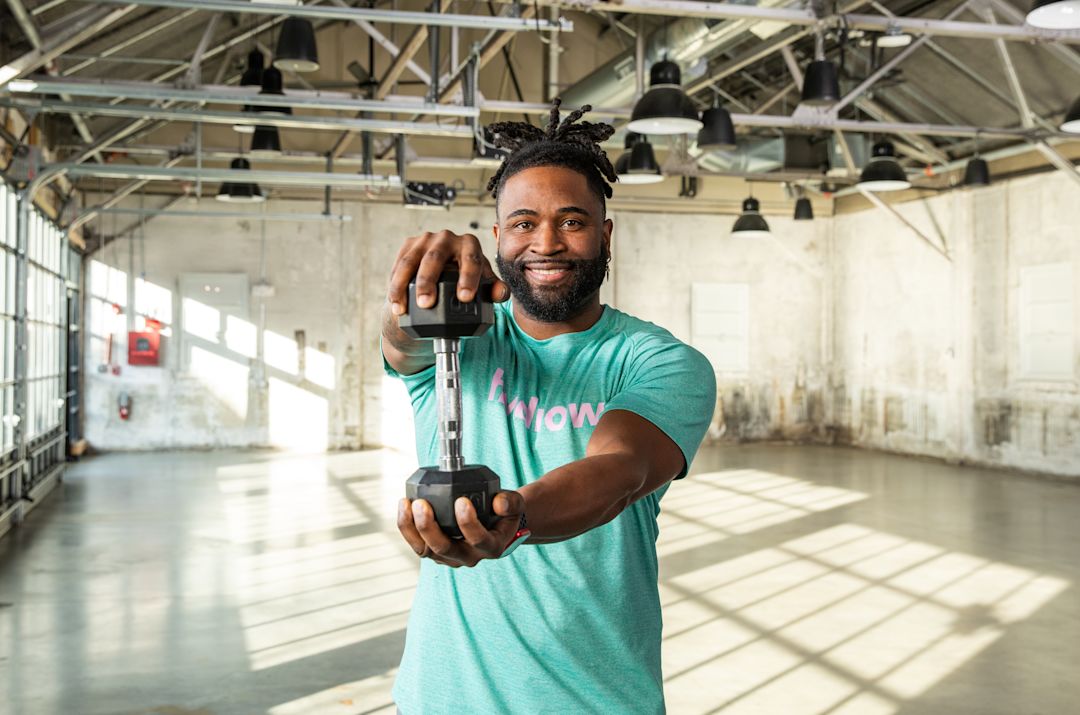
Explore Hydrow's library of strength training workouts.
The benefits of strength training without weights
There are numerous advantages to bodyweight strength training, including:
1. Accessibility
There’s no need for an expensive gym membership or equipment. You can work out anywhere, anytime with just your body. Just be sure you have enough room to safely perform the exercises in a dedicated space.
2. Functional strength
Bodyweight exercises mimic everyday movements, improving coordination and stability. Walking up stairs or carrying groceries are examples of everyday movements that can become easier by practicing these exercises.
3. Injury prevention
With bodyweight exercises, there’s less strain on joints compared to heavy lifting, making it ideal for beginners or those recovering from injuries.
4. Core engagement
Many bodyweight exercises engage multiple muscle groups, particularly the core, leading to better posture and stability.
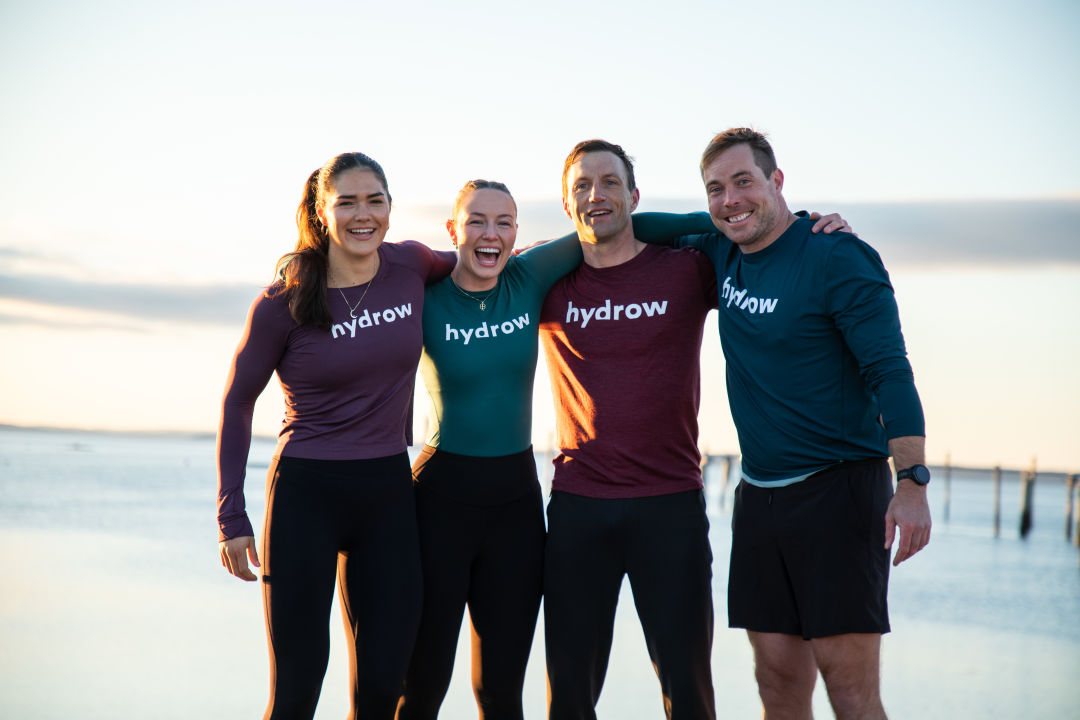
Explore Hydrow’s library of 5,000+ rowing, circuit training, yoga, Pilates, and mobility workouts.
5. Scalability
Weight-free strength training exercises can be modified for all fitness levels, whether you’re a beginner or an advanced athlete. Start with the basic movement and then add variety, tempo, or additional reps to make these exercises more challenging as you grow stronger.
The 12 best strength training exercises without weights
Below are 12 of the most effective bodyweight exercises to build strength, categorized by muscle group:
Superman hold
Triceps dips
Up-down planks
Squats
Lunges
Glute bridges
Planks
Leg raises
Bird dog
Burpees
Mountain climbers
Plank to downward dog
Upper-body strength training exercises without weights
1. Superman hold
Lying on the floor in a prone position, reach your arms out in front of you and lift your toes off the ground with your head in neutral position. This is great for challenging your lower back, rear shoulders, and glutes.
2. Triceps dips
Using a chair, bench, or low table, sit at the edge of the surface with your hands placed next to your hips and your fingers gripping the edge. Slide your hips off the edge and slowly bend your elbows, keeping them close to your body as you lower your hips towards the ground. Then, press through your palms to straighten your arms and return to the starting position. Triceps dips are great for targeting your shoulders and (you guessed it!) your triceps.
3. Up-down planks
Start in a forearm plank with your elbows under your shoulders, core engaged, and body in a straight line. Push up to a high plank by placing one hand on the floor, then the other, straightening both arms. Lower back down by returning to the forearm plank one arm at a time. Repeat the movement, alternating sides while keeping your hips stable and core tight. This exercise targets your shoulders and triceps.
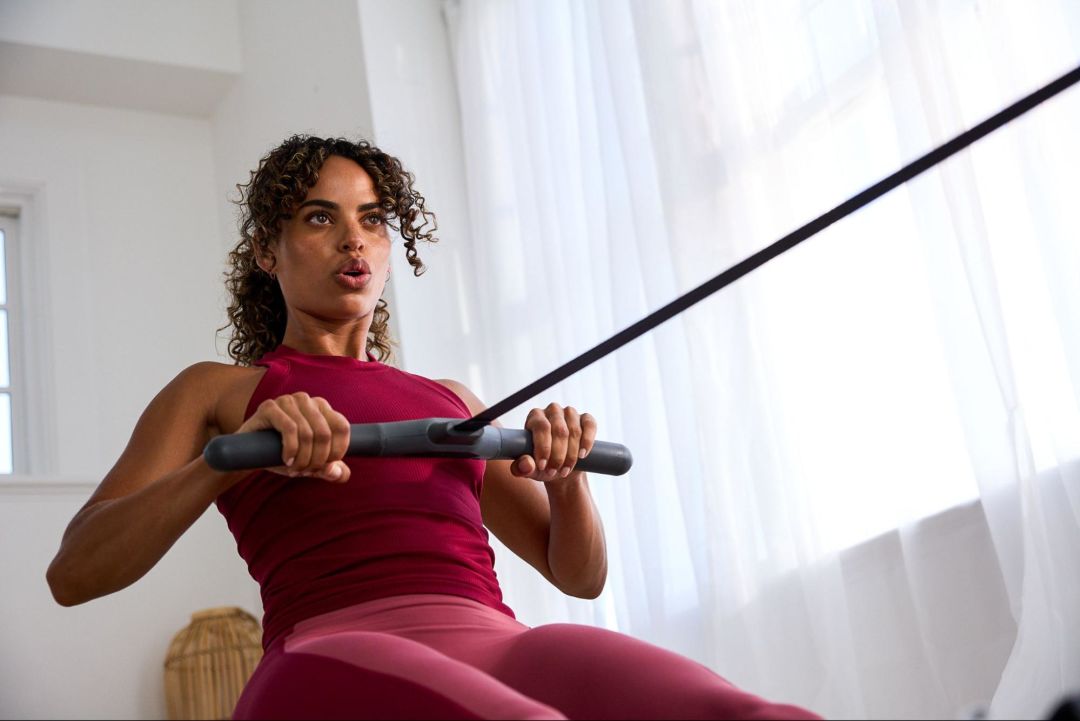
Efficiency for the win.
Work 86% of your muscles in just 20 minutes of rowing with Hydrow.
Lower-body strength training exercises without weights
1. Squats
Stand with your feet shoulder-width apart, lower your hips back and down until your thighs are parallel to the ground, and then return to standing. Squats are perfect for building your quads, hamstrings, and glutes.
2. Lunges
Step forward with one leg, lower your back knee towards the ground, then push back to standing and switch sides. Lunges help to improve balance, coordination, and unilateral leg strength.
3. Glute bridges
Lie on your back with knees bent and feet flat on the ground. Lift your hips toward the ceiling by squeezing your glutes. Lower slowly and repeat. This exercise works your glutes, hamstrings, and lower back.
Core strength training exercises without weights
1. Planks
Hold a forearm or high plank position, keeping your core engaged and body in a straight line. All types of planks are excellent for strengthening your entire core, including your abs, obliques, and lower back.
2. Leg raises
Lie on your back, lift your legs until they are perpendicular to the floor, then slowly lower them back down. Leg raises benefit your lower abs and improve overall core control.
3. Bird dog
Start on all fours. Extend one arm and the opposite leg straight out while keeping your core tight.
Return to the starting position and switch sides. This exercise targets your core and lower back, along with your glutes, shoulders, hip flexors, and hamstrings.
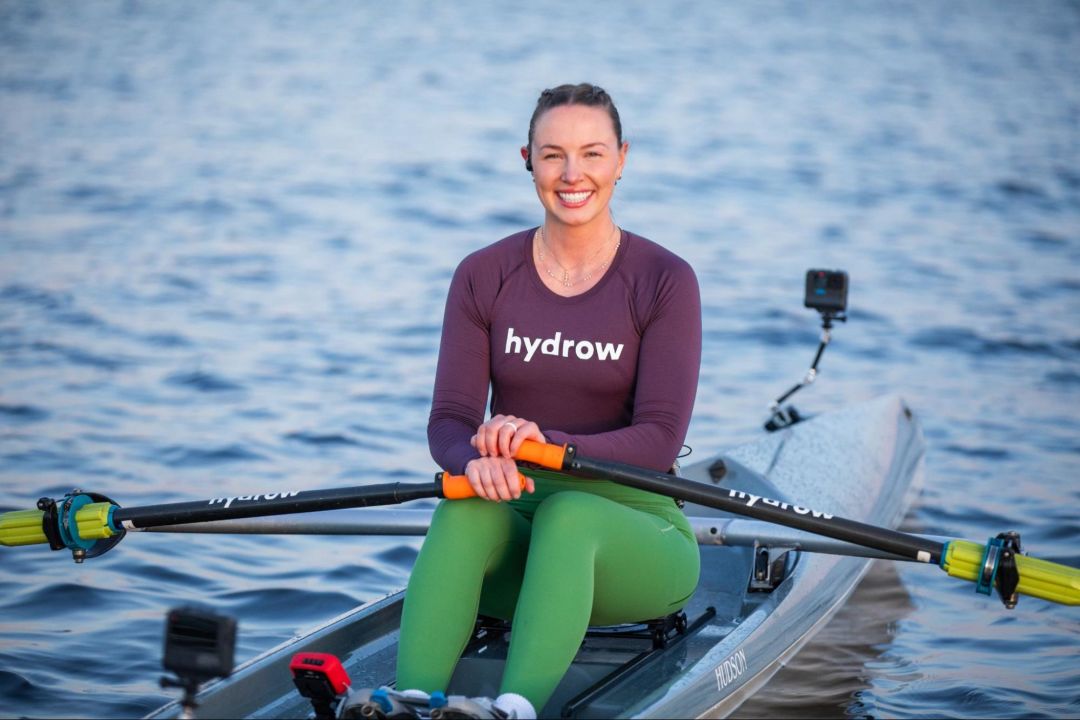
Did you know?
Over 90% of Hydrow members are still active one year later.
Full-body strength training exercises without weights
1. Burpees
Start standing, squat down, place your hands on the floor, jump your feet back into a push-up position, return to squat, then jump up. Burpees, while extremely challenging, engage your entire body and improve both strength and cardiovascular fitness.
2. Mountain climbers
Start in a plank position and drive your knees toward your chest one at a time in a running motion. Mountain climbers build your endurance, core strength, and lower-body agility.
3. Push-up to downward dog
Perform a push-up, then shift your hips back into a downward dog position. Return to a plank and repeat. This exercise targets your chest, shoulders, triceps, core, and hamstrings.
Tips for building a strength training routine without weights
If you’re ready to jump in for some weight-free strength training, we suggest looking over our tips before you start. While these exercises are accessible and designed for all types of comfort with strength training, it’s important to note the following:
Focus on progressive overload: Increase reps, add time under tension, or try more challenging variations to continue making gains. Without weights, you can still add complexity to engage your muscles.
Maintain proper form: Ensure correct technique to maximize effectiveness and reduce the risk of injury. Even without adding in dumbbells, you can still injure yourself if you aren’t careful.
Incorporate variety: Mix exercises to target different muscle groups and prevent plateaus. Try focusing on one muscle group per day or group them in other pairings that are accessible to you in order to make sure all of your muscles are engaged.
Add tempo work: Slowing down movements, like push-ups, increases muscle engagement by making the exercise more challenging. Once you feel like you’ve mastered one exercise, incorporate tempo work to increase the complexity.
Use unilateral exercises: Single-leg or single-arm movements improve balance and coordination. It also allows you to focus on one side of your body at a time, ensuring one side isn’t compensating for the other.
Stay consistent: Aim for at least two to three strength sessions per week to see progress. Consistency is key to seeing the results in the mirror.
Pair with cardio: Rowing on your Hydrow machine can complement bodyweight strength training for a well-rounded fitness routine.
Time to get started!
Strength training without weights is not only possible but highly effective. With the right exercises and proper progression, you can build muscle, increase endurance, and improve functional strength without any equipment. Whether you’re a beginner or an advanced fitness enthusiast, bodyweight training offers endless benefits.
If you’re looking for structured strength training workouts, Hydrow offers guided strength training workouts for every fitness level, all led by world-class Athletes who coach you through each movement and help you stay consistent. Additionally, our rowing workouts target 86% of your muscles with every stroke, delivering full-body training and real results.
Explore Hydrow’s strength workouts and see how far you can go.
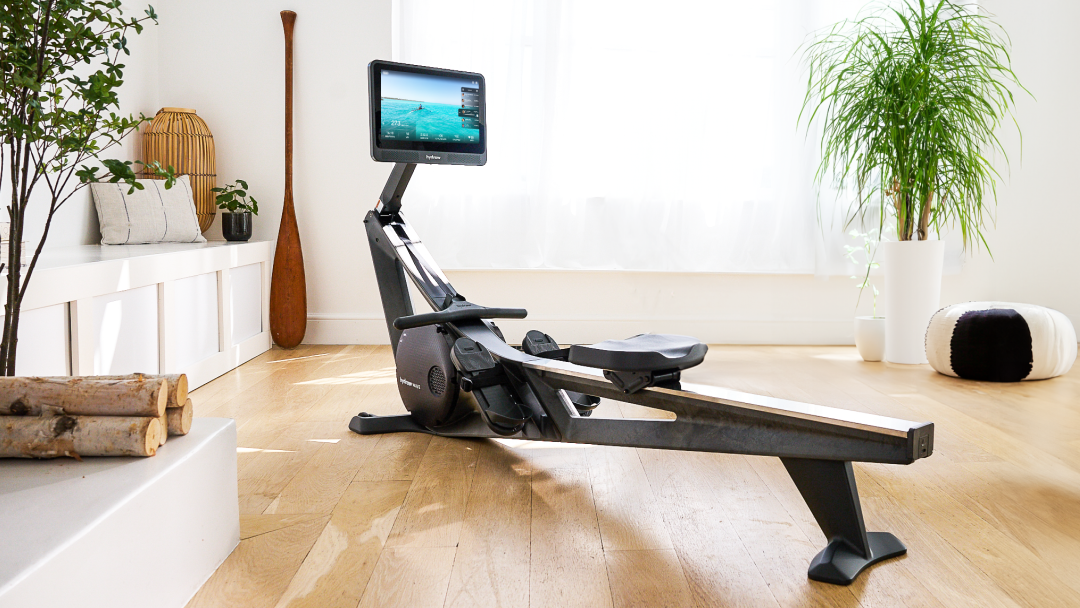
Real strength keeps moving
Learn how working out with Hydrow can help support a fuller, more active life.
